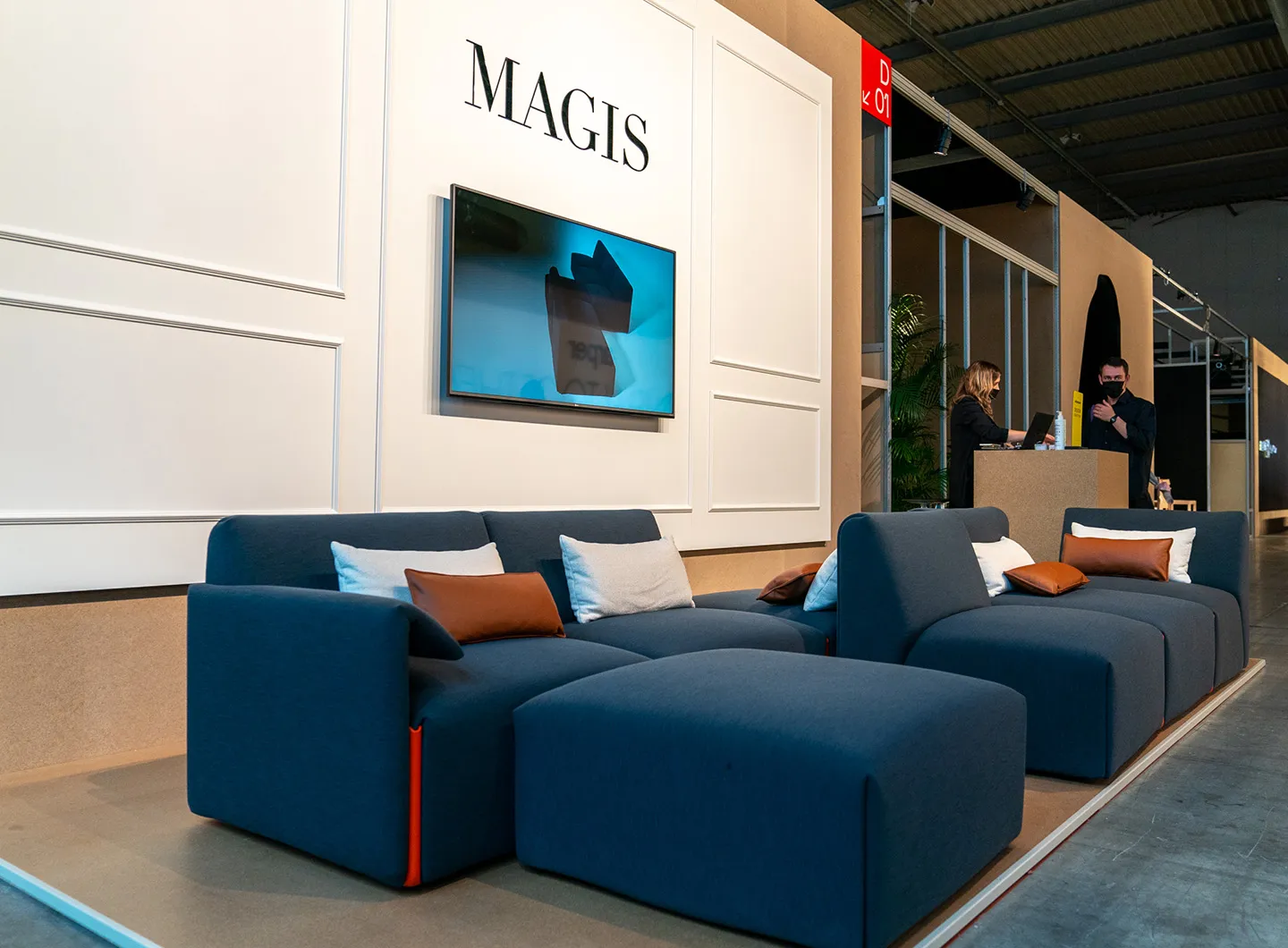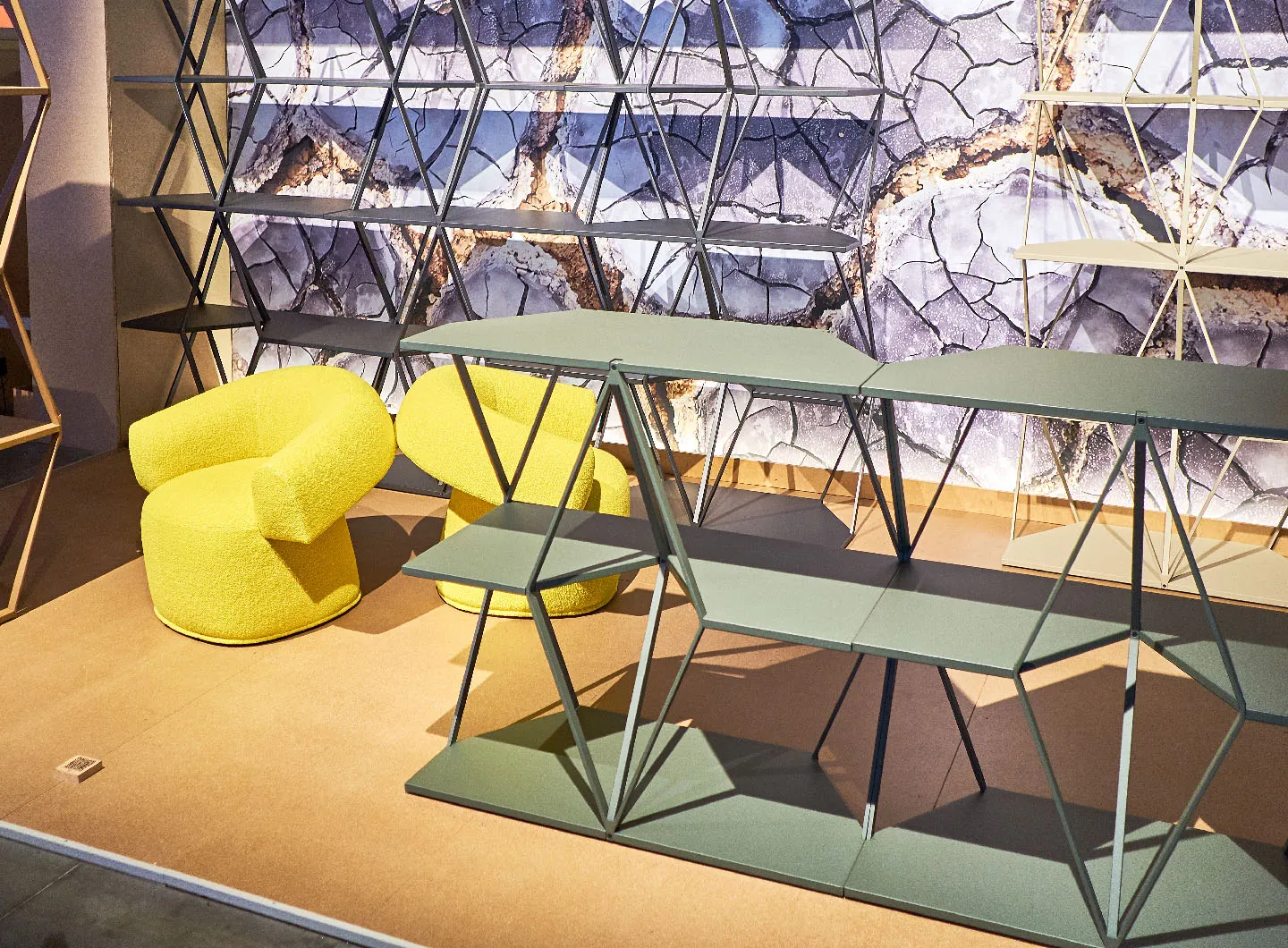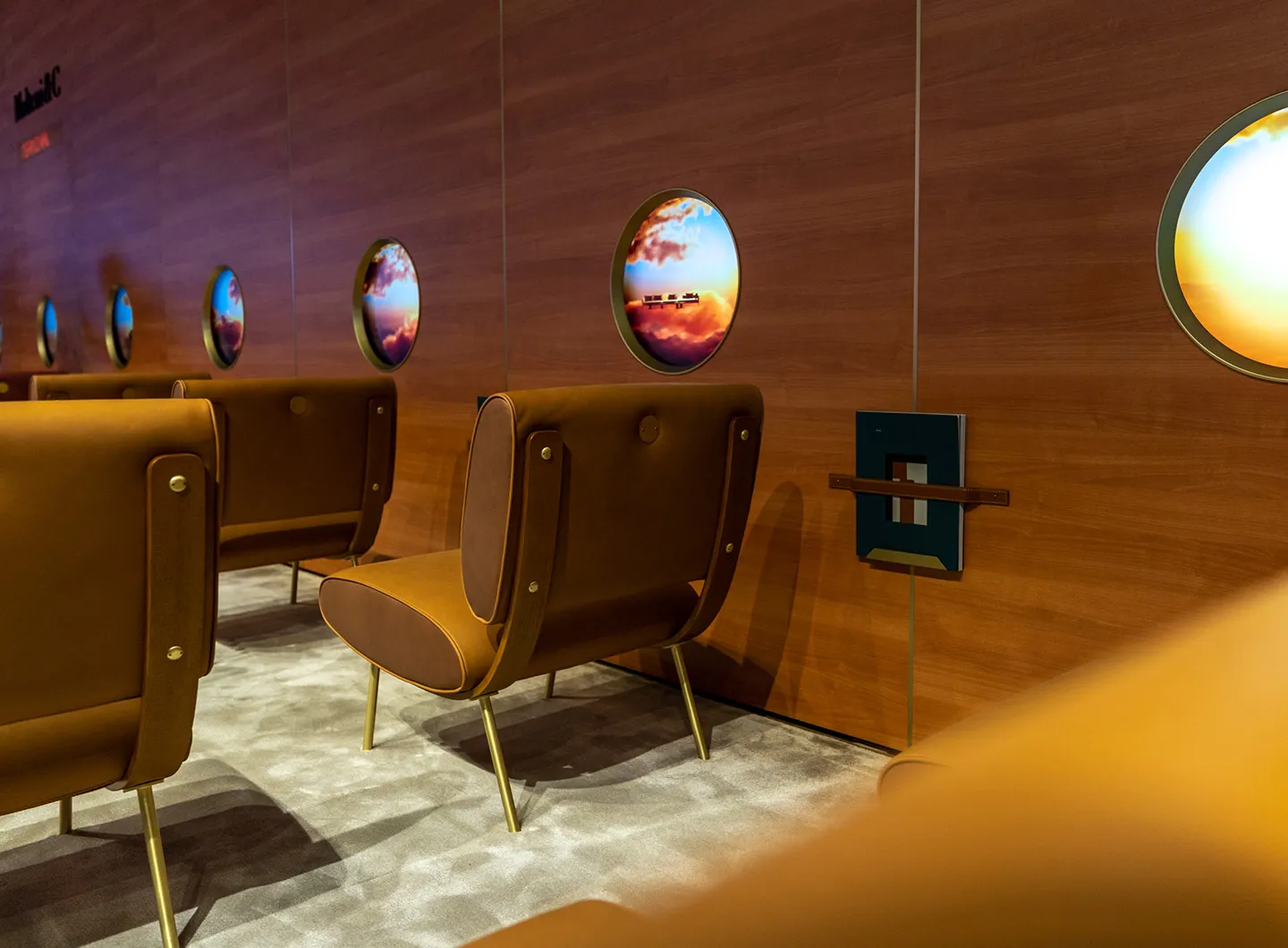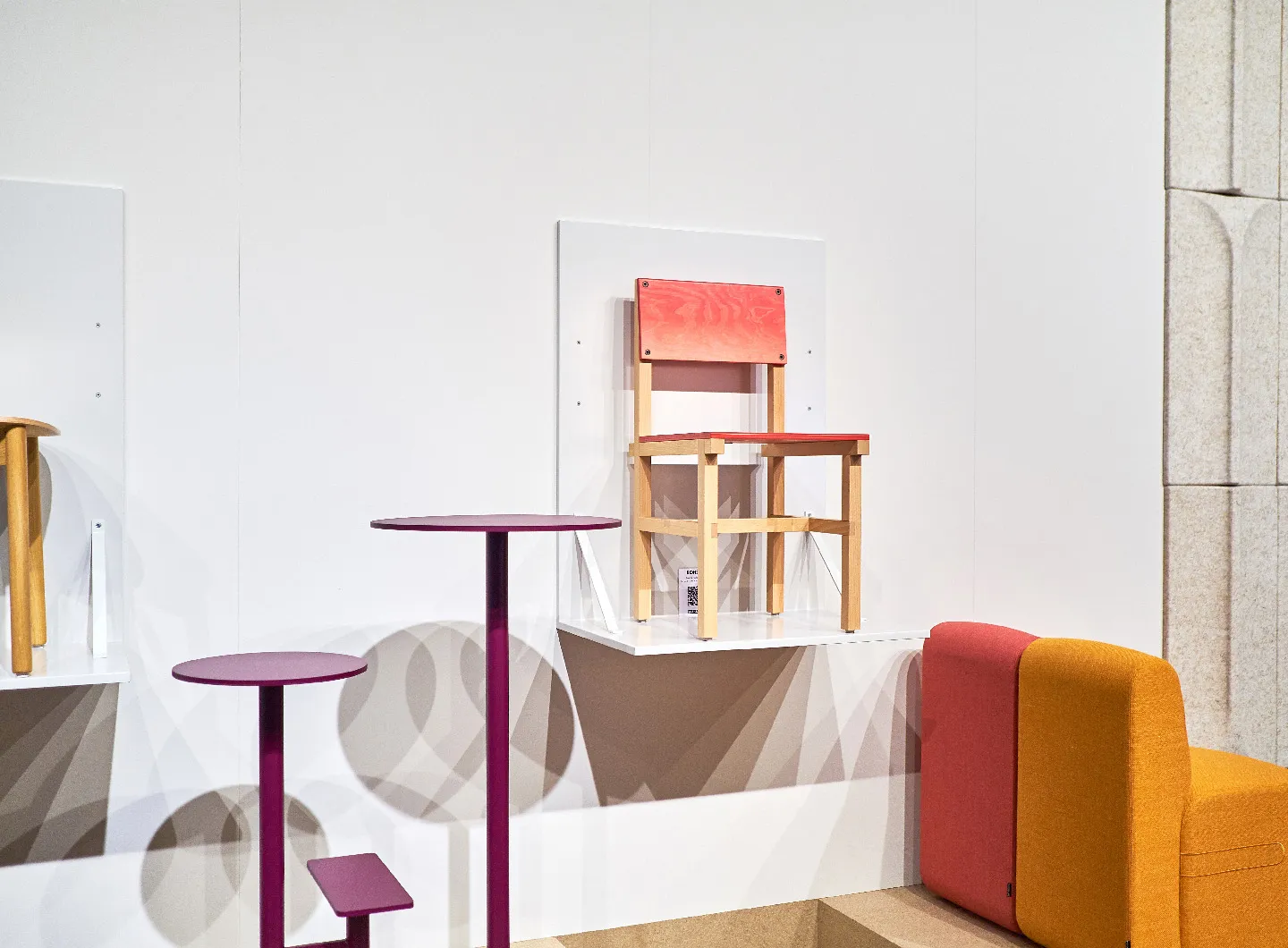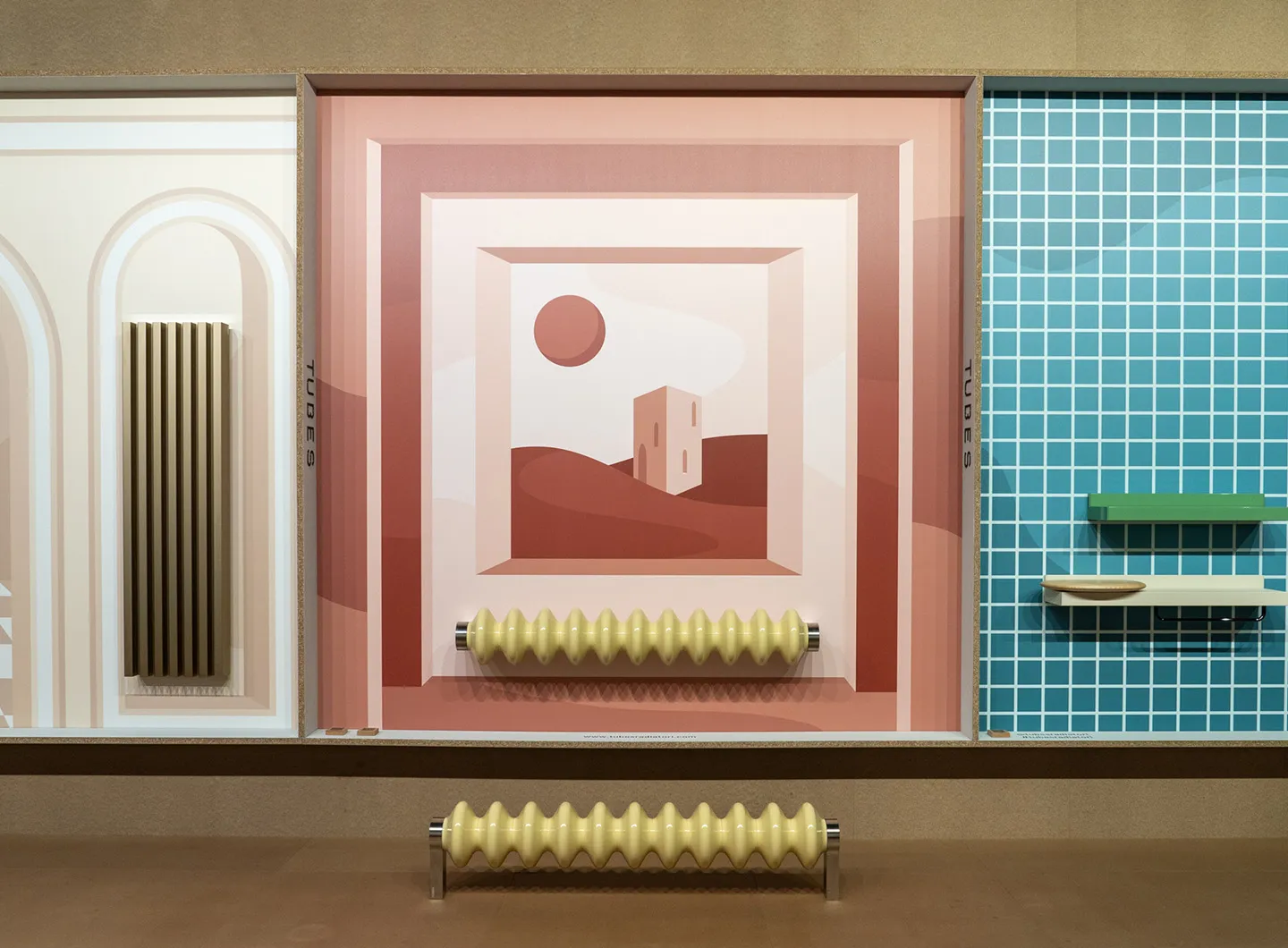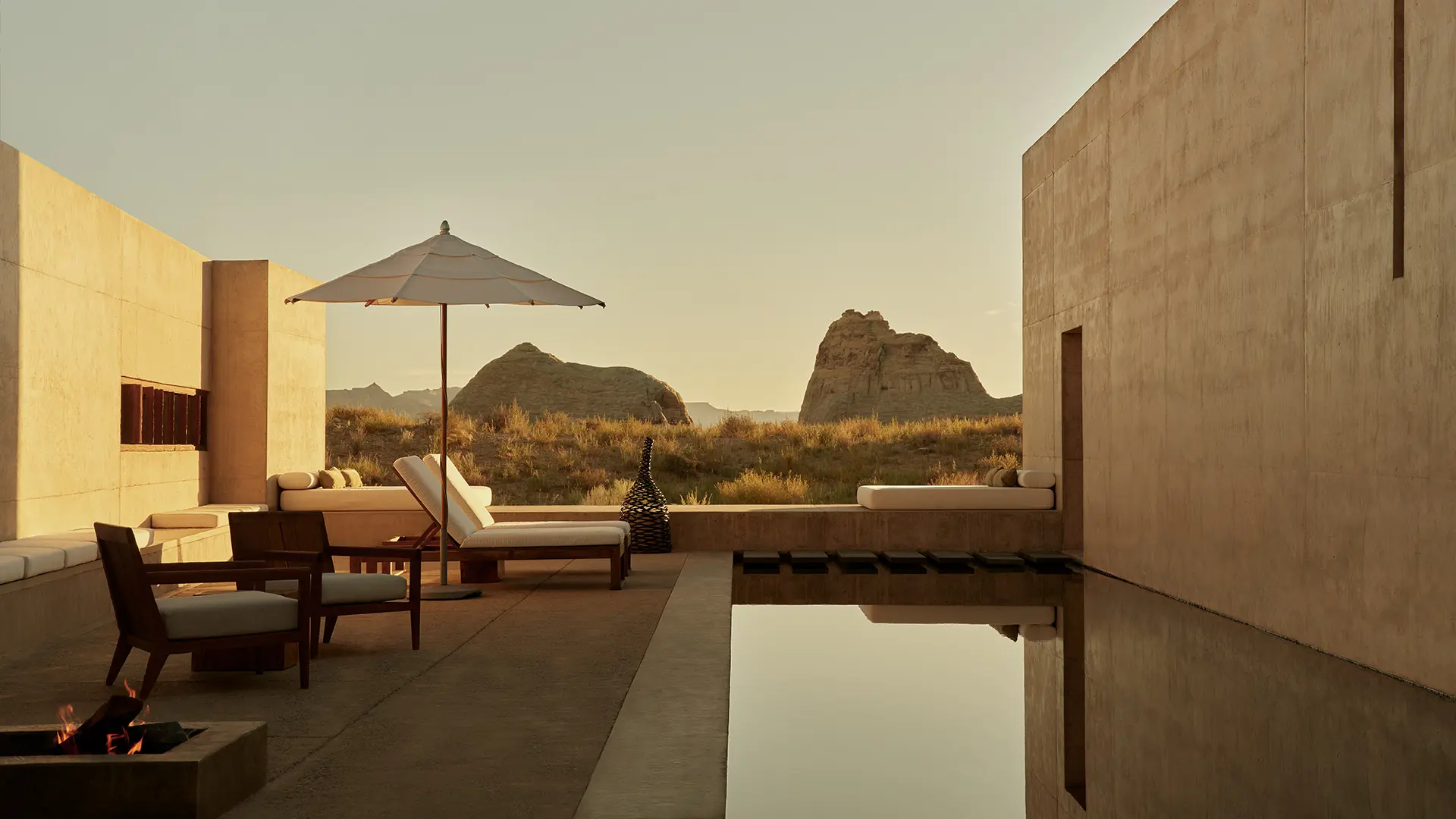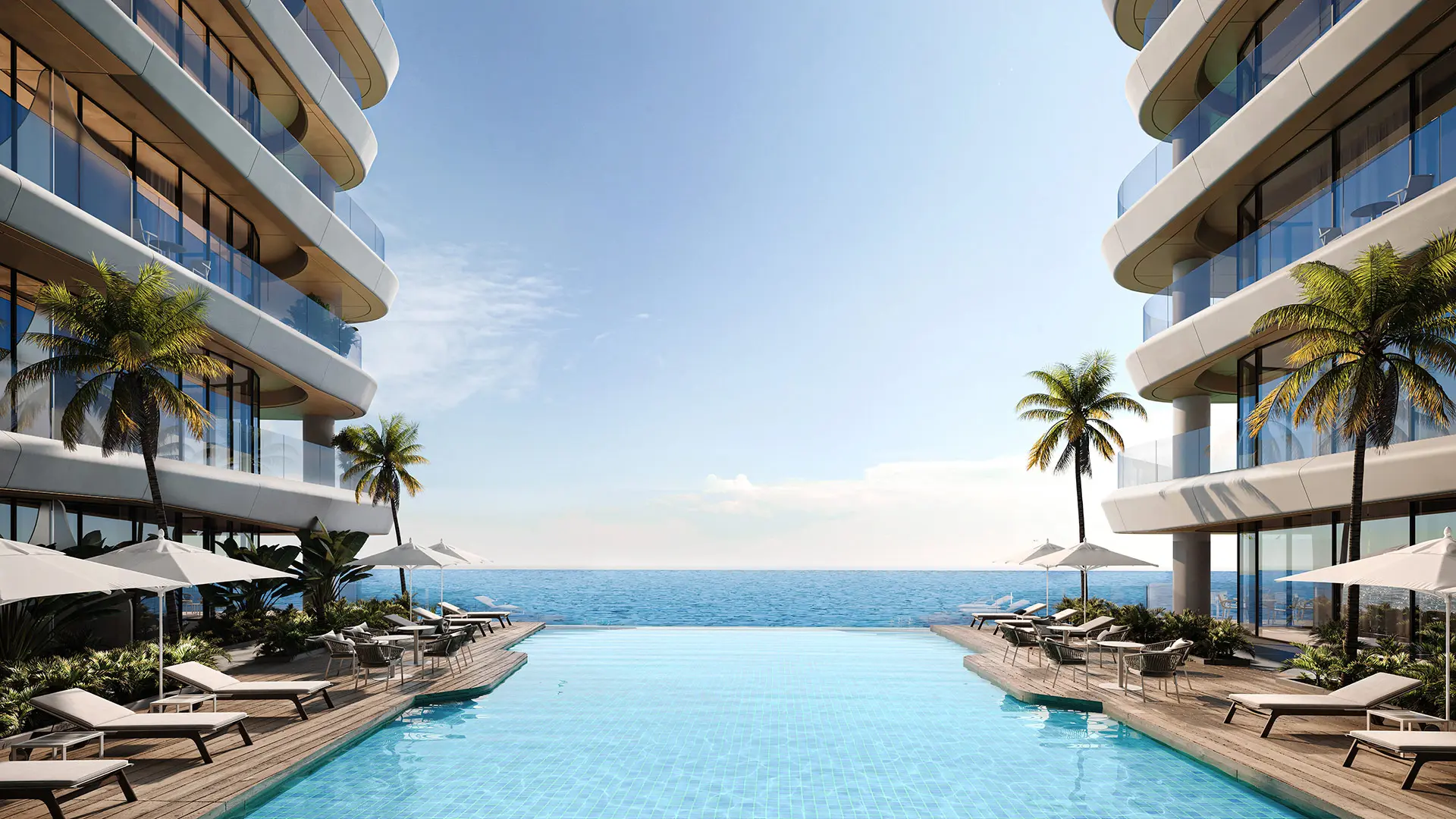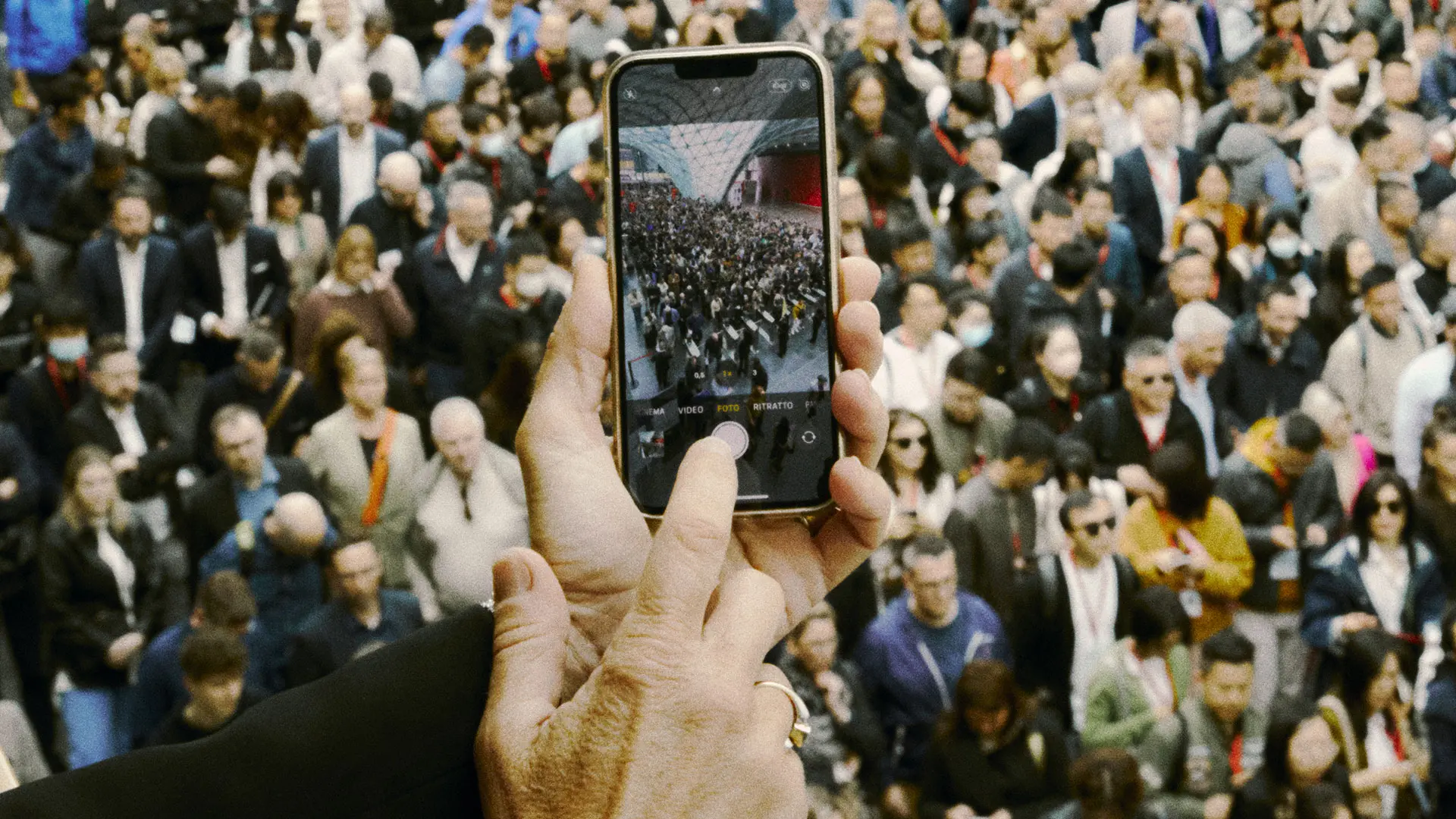From Japan to Norway, by way of India and the United States
“supersalone” - going back to the essential
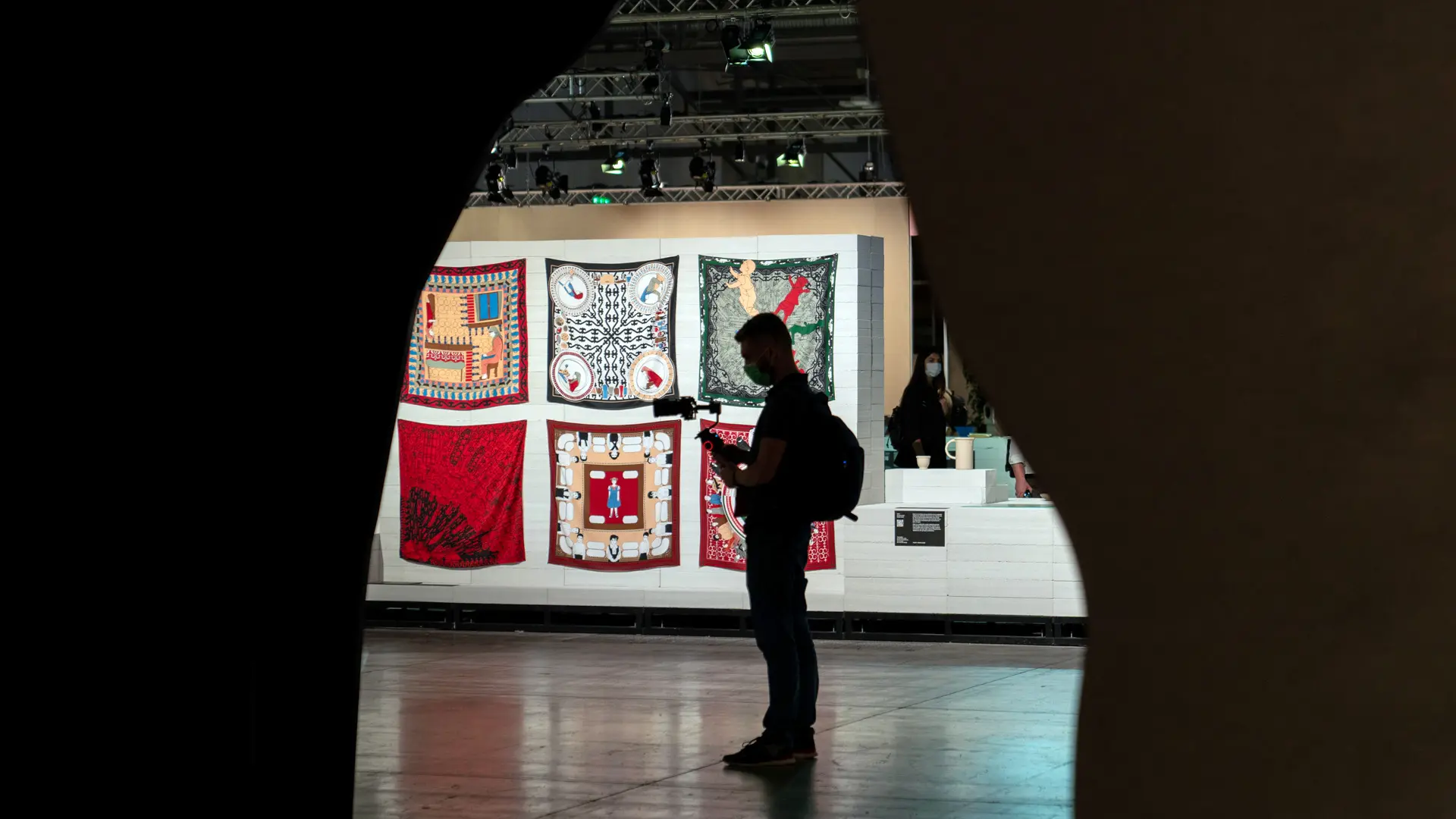
Photo by Tanya Viganò
The all-new fair being held over the last few days has driven the companies to rethink the way in which they traditionally presented themselves. The choice of pieces, great product attention and a direct interface with the public have characterised their approach. With a bit of room left for dreaming.
The all-new formula for “supersalone” has pushed the companies to adopt the kind of synthesis they had probably never had to deal with before, and which has highlighted choices and trends already making themselves felt, driven by the pandemic. The installation curated by the architect Andrea Caputo meant that the various brands have had to contend with a particularly linear space, three metres deep for each brand. A huge change from the gigantic settings of years gone by, with stands like small, populated universes, on several floors even.
Less space is one of the factors that have made a difference (many of the brands have made full use of the showrooms in central Milan for events and presentations), as has the opportunity for visitors to purchase objects at the fair itself – another novelty. The upshot has been carefully chosen pieces on show. Prototypes barred. No chance to resort to the old ‘OK, let’s do it, let’s take it to the fair and see how it goes’ paradigm. Only mature pieces have made it to “supersalone” – the ones that have made it over the final fence. This is also down to the pandemic: with the total cancellation of the 2020 Salone, the traditional annual showcase, inundated with new products, was simply annulled. Many of these products have never been presented.
This accounts for the fact that companies such as Magis and Moroso have hedged their bets on pieces that had previously surfaced in the immense three-dimensional space (to be filled?) of the stands of a few years ago. In the spare linear surroundings of “supersalone,” Magis is presenting Costume, a system of modular sofas designed by Stefan Diez. A piece to be touched and to be dismantled, as the accompanying video shows, given that the approach is geared to meeting the criteria of the circular economy, in which every single element can be recycled.
Moroso has brought along the Secret Cubic Shelves bookcase by Olafur Eliasson, a project sparked by the artist’s Green Light installation at the 2017 Venice Biennale. In this new edition, the product is entirely made of iron (recycled and recyclable) and makes for as little environmental impact as possible.
Having got used to the wonderlands on the stands over the last few years, in which one could lose oneself in the folds of some extremely comfy upholstered piece, reality comes as a bit of a shock. Not so much a minimalist decision, rather a pragmatic one. Besides which, the choice of pieces, in the case of Magis and Moroso at least, dovetails perfectly with the sustainability principles of the entire event. So, here too, interest has moved from “never seen before” to “consistent.” A test of maturity, perhaps a sign of the times, that relieves design, this design, of the burden of what is often a self-imposed seasonal duration (in which the media is complicit).
Freed from the mania of having to come up with something new at all costs, the brands are continuing to produce pieces that are consistent with their own pathway, their own needs and their own fans. Design has become less rushed, had time to get organised, to think.
Pedrali is producing pieces that respond to the demands of post-pandemic life, starting with home office solutions (such as Robin Rizzi’s sound absorbing desktop panel Toa Folding Screen) as part of their Calvi Brambilla display.
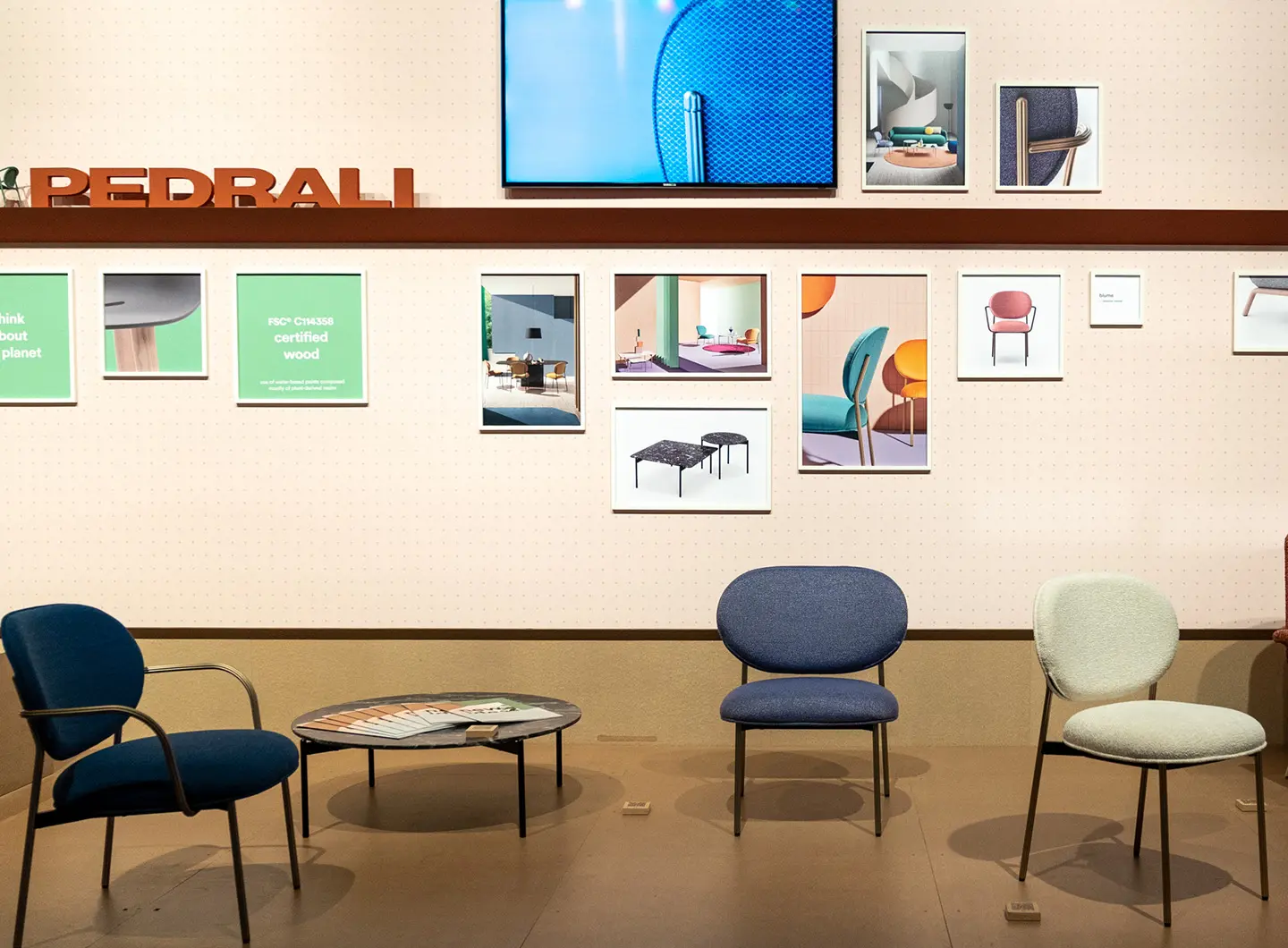
Pedrali, Photo by Tanya Viganò
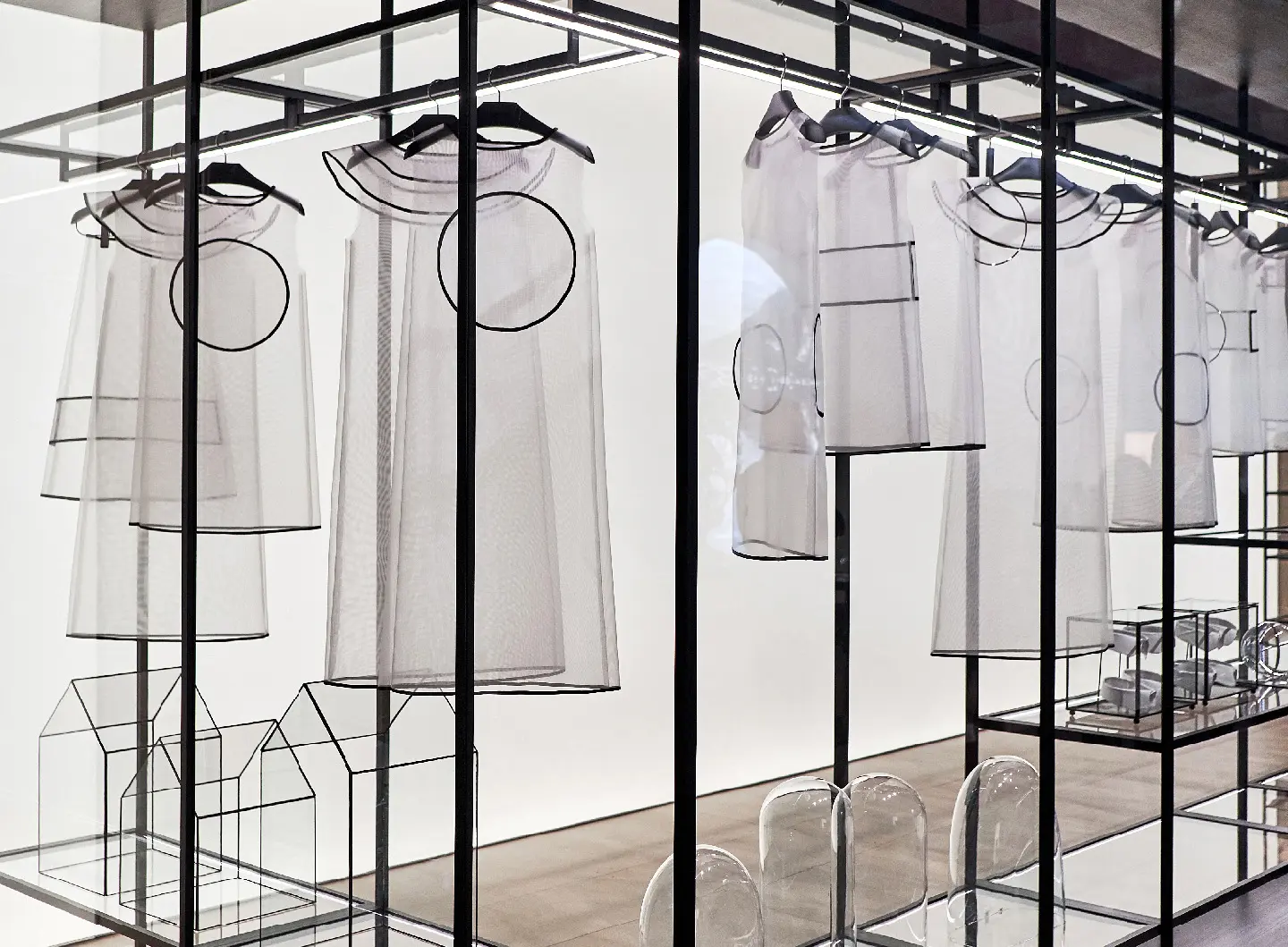
Porro, Photo by Daniele Mari
Molteni has built its stand around Gio Ponti’s small Round D.154.5 armchair, the company’s latest re-edition of work by the master. Ron Gilad’s Flight D.154.5 installation takes you into an aeroplane with wonderful scenery glimpsed through the portholes. Leaving a bit of room for the imagination.


